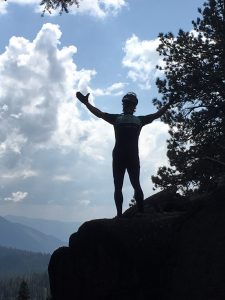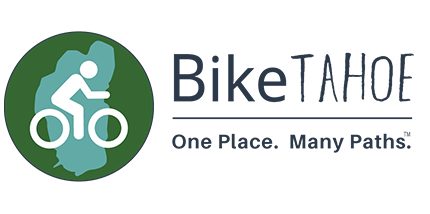Bicycling is a diverse activity enjoyed by a global community for over 200 years. People riding bicycles can enjoy speed and endurance competitions, travel across country, challenge themselves with obstacles and terrain features, run errands, and commute to school or work. While bicycling is enjoyed in a variety of ways, how many people see bicycling as a spiritual practice?
What is a spiritual practice and how can bicycling as a spiritual practice be of value to us?
A spiritual practice is a regular activity for the purpose of cultivating and connecting to what we most care about. It can be an inner journey to realizing our ‘true self’, not our social or professional self we present to the world, but rather connecting to and expressing our soul – the spirit and essence of who we really are. It can also be a helpful way to center and ground ourselves during periods of change and uncertainty.
People with a spiritual practice are often positive, optimistic, productive, kind, social, generous and expressive with gratitude. Their health and vitality are important to them and they continue practicing their spirituality as a normal way of life.
Spiritual practices are often associated with yoga, meditation and the divine, but they can also take on any form like hiking, gardening, cooking, skiing, snowboarding and bicycling for example – there are many opportunities.
In what way can bicycling as a spiritual practice generate positive life-affirming outcomes for us?
Here are eight ways for building bicycling as a spiritual practice.
1. Declaring your core values. Each of us, consciously and unconsciously, are being influenced and guided by our core values, but few of us actually declare them. Naming them, writing them down, and speaking of them to others brings them into consciousness and gives us the power to use them as a navigational guide through life’s journey. Core values are what we most care about and examples can be: trust, justice, honesty, love, health, security, relationship, creativity, etc. There are many.
When faced with making decisions, accessing our core values and aligning them with the considerations in making a decision is a powerful move. When our values are aligned with our decisions and actions life works better. By aligning our values, it is more enjoyable, gives us energy and the resiliency and flexibility to deal with changes and uncertainties. Life is just more fun and productive.
The opposite is also true. When our values are not aligned with our decisions and actions, we can experience stress, conflicts, struggles and unhappiness. Everything seems like an effort and there is little room for joy, creativity or productivity.
Riding a bicycle can be a core value for one’s commitment to health, vitality, connection to nature, and more – it is certainly one of mine.
2. Trust Your Body’s Wisdom. Our body is a holistic functioning system – a Body. It is a Body consisting of our mental, physical, emotional and spiritual capacities. When we become aware of how our Body responds to people and situations, it informs us and can help guide our decisions and actions. You may have heard the phrase “trust your gut”. That is an invitation to trust your Body’s wisdom by bypassing our self-centered ego.
By tapping into our Body’s wisdom, we can begin noticing when our body expands or contracts in situations or thoughts. Expansion feels like you have full breath, shoulders drop, muscles relax, eyes widen, and you feel large and energized with the possibility of moving toward a promising future. When I feel expansive, I believe my Body’s intelligence is telling me YES – affirming I am on the right path.
Contraction feels like a shortness of breath, constriction around the chest area, shoulders rise, and muscles tense, jaw gets rigid, eyes narrow focus, and we may see few options available to us or that life is threatening. When my Body contracts it is telling me NO, and prompts me to check in with what is really going on.
3. Riding with Intention.Riding with intention is a powerful tool to manifest what we most care about. The power comes from integrating our intention with a whole Body commitment to action. This somatic action of intention goes to a deep neurological and cellular level – our cells align with our intention.
Consider what you care about or what you want to produce. Use the following powerful simple sentence for declaring your intention. “I am a commitment to _______”. For example, “I am a commitment to being healthy”. To say “I am a commitment to” means it is through my actions (riding my bike) that represents the commitment to produce my intended outcome.
4. Be What You Seek. Being what you seek is another way of organizing our actions toward what we care about. Becoming what we seek, or care about, can empower us to take action and be an expression of that state-of-being in the world. When we embody what we seek, we feel actualized and the attitudes of those around us change towards us.
Becoming what you seek starts with the declaration “I am”. For examples: “I am love,” “I am strong and healthy,” “I am safe and secure,” “I am creative and productive,” and “I am loving and lovable,” etc.
A personal experience as an example.

Be and Share the Love
”I remember a day when I was feeling sorry for myself and not feeling loved by a special someone. Feeling unloved, and self-pity, I decided to replace my poor me story with becoming the love that I sought. I jumped on my bike with love in my heart and rode down the bike path. Along the way, a couple from Florida stopped me and asked where good trails to ride are. At first, I was giving them directions, and then I thought here is an opportunity to be the love I sought.”
“I shifted out of my wayfinding mode and invited them to join me on a network of local single-track trails. As we rode, I would check in with them to see how they were enjoying themselves. We were having so much fun; I thought it would be cool to shoot a video of them riding together so they could share their experience back home. They were so stoked and appreciative; they invited me for dinner. We enjoyed lively conversations, and they promised to return to Tahoe to ride again. We all felt so good with much love and kindness. I was a happy love – filled bicyclist.”
5. The Journey of a Hundred Miles Begins with the First Pedal Stroke. (Adapted and modified from Chinese prophet, Lao Tzu.). At times, life can seem overwhelming and our goals and dreams feel beyond us. We may not feel motivated to ride, and the likelihood of riding our first one hundred miles or to the store may appear out of reach. During these immobile times of self-doubt, jump on your bike and take the first pedal stroke, and then the next, and next toward your goal. Before long, you will be closer to your goal or arriving at your destination. All things worth doing begin with the first pedal stroke.
6. Be Here Now. One of the aspects I most love about skiing and biking is how it keeps me in the present moment. Have you ever notice that it is difficult to be thinking about the past or the future while descending through the forest on a powder day or on a single-track trail? You cannot because our Body must be totally engaged in the present moment to negotiate obstacles, adapt to surface conditions, and keep moving towards our intended destination. This moving and adapting in the present moment often produces a feeling of euphoria named a “flow” state.[1]
Being in a “flow” state (also referred to as being in the zone) is a life-affirming experience when all aspects of our Body are immersed and aligned with our intention. We feel alive, energized and expansive. How can we adapt this “flow” state experience into our daily life? One way is to become aware of what the “flow” state feels like and remember the tactics and actions we took to be in the present moment.
7. Express Generosity of Spirit – Say “Hi,” be nice.

Say Hi, Be Nice
Saying “Hi” and being nice on and off the trail is expressing our generosity of spirit. Expressing a generosity of spirit to others positively expands our Body and demonstrates our understanding of the value of our connectedness with others. It also demonstrates that we see and appreciate the journey others have chosen to travel. Acknowledging the common value of riding our bikes in others is an enjoyable life-affirming experience.
On occasion, we may ride along and notice a rider(s) stopped alongside the trail or road. Be sure to check in with them to see if they are OK and need any assistance.
8. A Change of Context – Metaphor Alert. A change of context is another powerful tool to help us see our mundane and familiar issues or situations differently. Bicycling as a spiritual practice is a great example for a change of context. When we look at how we bicycle, our experience of bicycling, the tactics, preparation and disciplines we do, we can use this process as a metaphor of how we participate in life – giving us insight into our habitual patterns and beliefs that may or may not serve us.
For example, consider how taking a first pedal stroke to overcome immobility can be a useful metaphor applied to other aspects of our life in which we feel stuck. Then again, remember being in a “flow state” on the mountain and consider what you did and how you may apply similar tactics to be in a “flow state” at home, work or school.
Putting it all together for bicycling as a spiritual practice. Taking the above individual practices and putting them into a bike ride progression, we can begin experiencing bicycling as a spiritual practice. Try them out and adapt them to build your own personal practice that works for you.
Body Wisdom Check. Before jumping on your bike, take a Body Wisdom check. Take notice if it is expansive, relaxed, positive and looking forward to riding or is it tense, tight, and thinking about past or future concerns.
Riding with Intention / Being what we seek. Declare your intention using the declarative statement that feels the most empowering for you. Try using each of the following formats to discover the one that gives you the most energy to take action. “I am a commitment to ___________” or, “I am __________”.
Pedal into Action. Immediately following your declared intention jump on your bike and take your first pedal stroke – pedaling is the action of your commitment moving with intention.
Be Here Now. During your ride, notice any feelings, thoughts, sensations or images, and keep returning to the present engagement.
Say “Hi” along the Way. Express your generosity of spirit by saying “Hi” when you come upon another trail user: hiker, equestrian, bicyclist or wildlife. Be sure to check in with any trail user who has stopped along the trail and see if they need assistance.
Post Ride Body Check. Do a Body Wisdom check immediately following your ride. Notice what you are experiencing (thoughts, feelings or sensations). Is your Body expansive, energized and wanting to get in action with the rest of your day or is it in contraction, fearful and wondering where you are going in life?
Change of Context. Now consider your ride experiences (thoughts, feelings, sensations, images) and place those experiences in a change of context. How do these experiences appear in other aspects of your life? Can you use these experiences as a metaphor for insight into how you might want to apply them in your approach to life’s challenges and opportunities?
Thoughts for consideration:

I am Happy, Healthy and Alive
- In what ways can declaring what you want and immediately taking a physical action be helpful in moving toward what you care about?
- How can the experiences from bicycling as a spiritual practice be useful in other aspects of your life?
- What other activities (skiing, snowboarding, surfing, gardening, hiking, etc.) do you see value in adopting the bicycling as spiritual practice progression?
Have fun with this practice! Try it out and adapt it so it feels right for you.
Keep an eye out for the metaphors that are always revealing themselves in everyday activities and see how you can apply them in a change of context. See how bicycling as a spiritual practice can help move you more joyfully, efficiently and effectively toward what you want to create in your future.
If you would like to chat or share your experiences with me, I welcome your thoughts. You can reach me at Ty@BikeTahoe.org.
Best wishes and see you on the trails.
Ty Polastri
Ty Polastri is a Life Coach, Minister and former founder/director of the Institute for Integral Living, an education company developing and leading long-term Personal Mastery programs.
- Csikszentmihalyi, Mihaly (1990), Flow: The Psychology of Optimal Experience, Harper Perennial.


